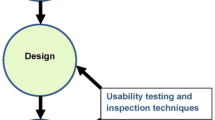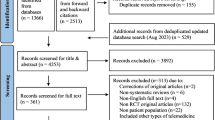Abstract
A growing number of clinical trials employ electronic media, in particular smartphones and tablets, to collect patient-reported outcome data. This is driven by the ubiquity of the technology, and an increased awareness of associated improvements in data integrity, quality and timeliness. Despite this, there remains a lingering question relating to the measurement equivalence of an instrument when migrated from paper to a screen-based format. As a result, researchers often must provide evidence demonstrating the measurement equivalence of paper and electronic versions, such as that recommended by the ISPOR ePRO Good Research Practices Task Force. In the last decade, a considerable body of work has emerged that overwhelmingly supports the measurement equivalence of instruments using screen-based electronic formats. Our review of key works derives recommendations on evidence needed to support electronic implementation. We recommend application of best practice recommendations is sufficient to conclude measurement equivalence with paper PROMs. In addition, we recommend that previous usability evidence in a representative group is sufficient, as opposed to per-study testing. Further, we conclude that this also applies to studies using multiple screen-based devices, including bring-your-own-device, if a minimum device specification can be ensured and the instrument is composed of standard response scale types.
Similar content being viewed by others
References
Gwaltney C, Coons SJ, O’Donohoe P, et al. “Bring your own device” (BYOD): the future of field-based patient-reported outcome data collection in clinical trials? Therapeutic Innovation & Regulatory Science 2015;49:783–791.
Coons SJ, Gwaltney CJ, Hays RD, et al. Recommendations on evidence needed to support measurement equivalence between electronic and paper-based patient-reported outcome (PRO) measures: ISPOR ePRO Good Research Practices Task Force Report. Value Health 2009;12:419–429.
Muehlhausen W, Byrom B, Skerritt B, et al. Standards for instrument migration when implementing paper patient-reported outcome instruments electronically: recommendations from a qualitative synthesis of cognitive interview and usability studies. Value Health 2018;21:41–48.
Gwaltney CJ, Shields AL, Shiffman S. Equivalence of electronic and paper-and-pencil administration of patient-reported outcome measures: a meta-analytic review. Value Health 2008;11:322–333.
Muehlhausen W, Doll H, Quadri N, et al. Equivalence of electronic and paper administration of patient-reported outcome measures: a systematic review and meta-analysis of studies conducted between 2007 and 2013. Health Qual Life Outcomes 2015;13:167–187.
Campbell N, Ali F, Finlay AY, Salek SS. Equivalence of electronic and paper-based patient-reported outcome measures. Qual Life Res 2015; 24: 1949–1961.
Juniper EF, Langlands JM, Juniper BA. Patients may respond differently to paper and electronic versions of the same questionnaires. Respir Med 2009;103(6):932–934.
Swartz RJ, Moor CD, Cook KF, et al. Mode effects in the Center for Epidemiological Studies Depression (CES-D) scale: personal digital assistant versus paper and pencil administration. Qual Life Res 2007;16(5):803–813.
Critical Path Institute ePRO Consortium. Best practices for electronic implementation of patient-reported outcome response scale options. https://c-path.org//wp-content/uploads/2014/05/BestPracticesForElectronicImplementationOfPROResponseScaleOptions.pdf. Accessed December 8, 2017.
Critical Path Institute ePRO Consortium. Best practices for migrating existing patient-reported outcome instruments to a new data collection mode. https://c-path.org//wp-content/uploads/2014/05/BestPracticesForMigratingExistingPROInstrumentstoaNewDataCollectionMode.pdf. Accessed December 8, 2017.
Byrom B, Doll H, Muehlhausen W, et al. Measurement equivalence of patient-reported outcome measure response scale types collected using bring your own device compared to paper and a provisioned device: results of a randomized equivalence trial. Value Health 2018;21(5):581–589.
Critical Path Institute Patient-Reported Outcome Consortium. Request for proposal. https://c-path.org/wp-content/uploads/2016/01/20160115_rfp-byod_study_and_ext_study_rev_eprosc.pdf. Accessed December 8, 2017.
Rosenthal R. The “file drawer problem” and tolerance for null results. Psychol Bull 1979;86:638–641.
Author information
Authors and Affiliations
Corresponding author
Rights and permissions
About this article
Cite this article
Byrom, B., Gwaltney, C., Slagle, A. et al. Measurement Equivalence of Patient-Reported Outcome Measures Migrated to Electronic Formats: A Review of Evidence and Recommendations for Clinical Trials and Bring Your Own Device. Ther Innov Regul Sci 53, 426–430 (2019). https://doi.org/10.1177/2168479018793369
Received:
Accepted:
Published:
Issue Date:
DOI: https://doi.org/10.1177/2168479018793369




